Smoking a brisket can be a time-consuming process, often taking the entire day and into the night to cook a large packer brisket. If you need to speed up the process without sacrificing the quality of the meat, there are several techniques you can try. In this article, we will discuss various ways to speed up the cook time for a brisket without compromising its flavor or texture.
There are several techniques that can be used to speed up the cook time for smoking a brisket. Wrapping the brisket in foil or butcher paper can reduce the cook time by trapping heat and creating steam. Increasing the temperature after wrapping the brisket can also reduce cook time by one to two hours. Cooking around 275°F will cook the brisket faster than the standard 225°F. Also, finishing the brisket in the oven can provide a consistent temperature and reduce cook time. A hot and fast brisket can be cooked in half the time of a traditional brisket, although it may not be as tender or flavorful. Pre-heating the smoker, choosing a smaller brisket, using a convection plate or fan in the smoker can all also help to reduce the total cook time.
Key Points
- Wrapping brisket in foil or butcher paper can reduce cook time by trapping heat and creating steam.
- Increasing the temperature after wrapping the brisket can reduce cook time by one to two hours.
- Finishing the brisket in an oven can guarantee a consistent temperature and reduce cook time.
- A hot and fast brisket can be cooked in half the time of a traditional brisket, but may not be as tender or flavorful.
- Pre-heating the smoker can reduce cook time by up to an hour.
- Using a smaller or thinner cut of meat can reduce cook time.
- Using a meat injector to add moisture and flavor to the brisket can reduce cook time.
- Using a convection plate or fan in the smoker can increase airflow and reduce cook time.
- Applying a dry rub to the brisket before smoking can reduce cook time.
- Using a sous-vide cooking method can drastically reduce cook time and result in a tender and juicy brisket.
10 Ways To Speed Up A Brisket
| Technique | Estimated Time Reduction |
|---|---|
| Wrapping in foil or butcher paper | 1-2 hours |
| Increasing temperature after wrapping | 1-2 hours |
| Finishing in an oven | Varies |
| Hot and fast method (300-350°F) | 8-9 hours |
| Pre-heating the smoker | Up to 1 hour |
| Using a smaller or thinner cut of meat | Varies |
| Using a meat injector | Varies |
| Using a convection plate or fan in the smoker | Varies |
| Applying a dry rub before smoking | Varies |
| Using sous-vide cooking method | Varies |
1. Wrapping Brisket Can Save Two Hours
This probably goes without saying, but wrapping your brisket in foil or butcher paper is one of the best ways to speed up the cook. Wrapping a brisket traps the heat and creates steam, which helps the meat cook faster. A brisket will normally stall for several hours once the meat reaches about 150°F to 160°F. This occurs when the meat sweats, which has a cooling effect on the brisket. But if you wrap your brisket, you will be able to push through the stall much faster and shave one or two hours off the total cook time. You can either wrap the brisket in foil or butcher paper. A foil wrapped brisket will have more of a pot roast flavor, plus it will soften the bark. A brisket wrapped in butcher paper will breathe more, so the bark will remain firm.
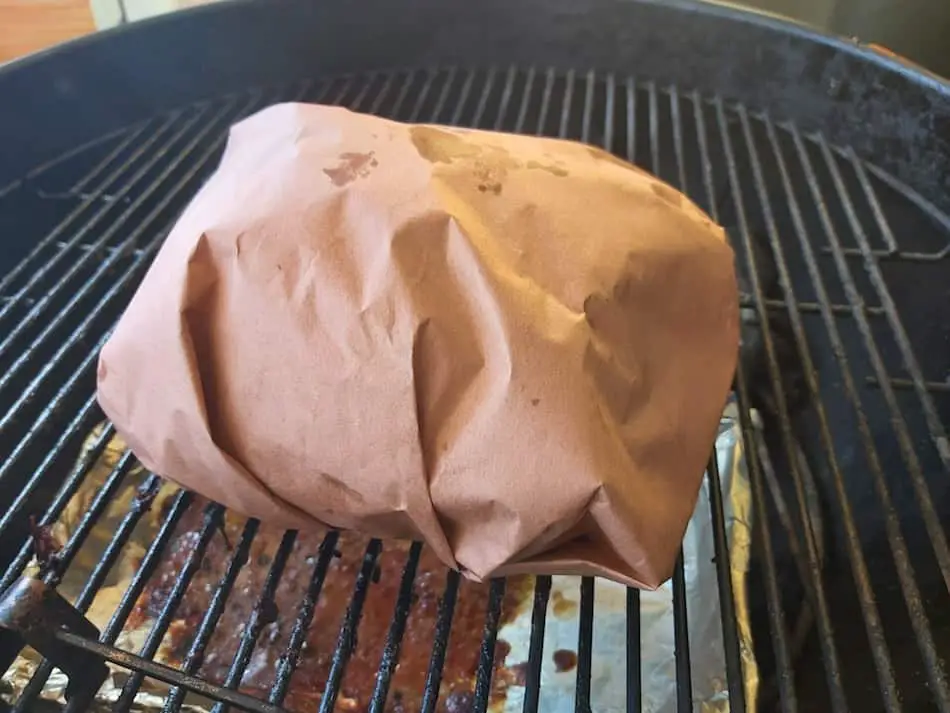
2.Raise The Temperature After Wrapping
You should smoke your brisket in the 225°F to 275° F range. If you are smoking at lower temps, once you wrap the brisket, it will be safe to increase the temperature of your smoker to 275°F. Once wrapped, your brisket will handle a temperature increase, and it will cook much faster. You can take one or two hours off the total cook time just by increasing the temperature 30 to 50 degrees.
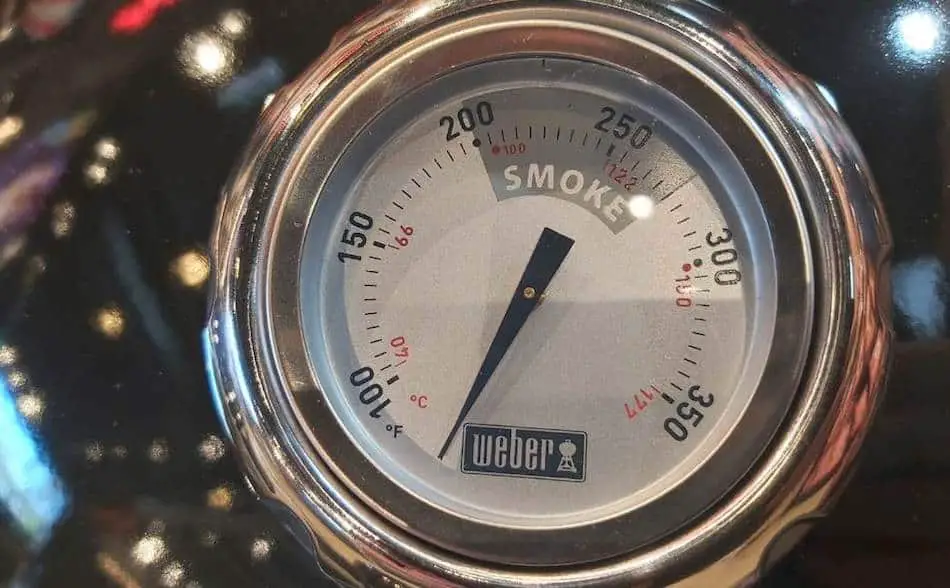
3. Finish in the Oven
There’s nothing wrong with finishing your brisket in the oven. As soon as your brisket has reached the wrapping stage, you can close your smoker and finish the brisket in a conventional oven. If you make a habit of this practice, over the year you will save a tonne of charcoal and wood.
The oven guarantees a consistent temperature once the brisket is in the oven, so you can get the brisket over the finish line sooner. You can also increase the temperature of the oven, but just make sure you keep a thermometer inside the meat so it alerts you once you reach the target temperature. This technique will work if you have inconsistent temperatures in your charcoal smoker, or if you are cooking in cold conditions where you are burning through excess fuel. Brisket will only absorb smoke during the first 5 to 6 hours anyway, so this will have no bearing on the finished product. At this stage, the brisket bark has set, and it has developed the flavor profile. After this, we move into the second phase of the cook, which is all about getting the brisket to that magical 203° F internal temperature.
Have you seen the most advanced thermometer on the market? FireBoard can be controlled via your phone, holds meat 6 probes, and records your cook data on a cloud.
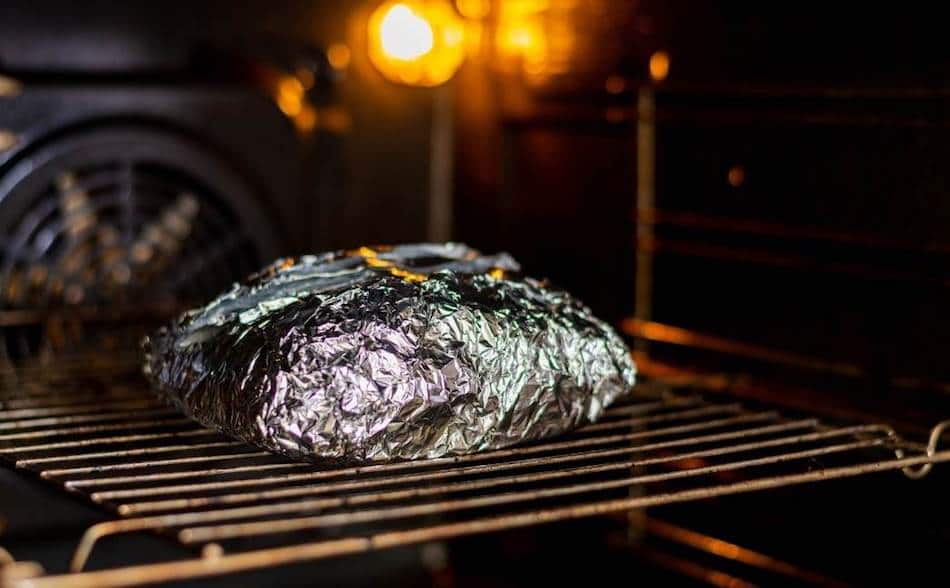
4. Try a Hot and Fast Brisket
One of the latest trends in barbecue is the hot-and-fast brisket where you can smoke in the 300°F to 350°F range. Normally a brisket will take 15 hours to cook, but a hot-and-fast brisket can be cooked in half that time and you can have it done in 5 or 6 hours. Before you attempt a hot-and-fast brisket, make sure you’re using a high-grade brisket. A USDA Select brisket won’t handle the high temps, whereas a USDA Prime or USDA Choice brisket will have lots of marbling to keep it moist during the cook. A Select grade brisket cooked at high temperatures will probably dry out before it’s done.
Also, hot-and-fast briskets won’t end up as tender, juicy or flavorful as a low-and-slow brisket. This is because a H&F will have less time to absorb smoke and less time to melt and render the fatty connective tissue. However, the point of the hot-and-fast brisket is to have your brisket smoked in record time. It’s not supposed to be perfect.
Although the hot-and-fast brisket won’t taste as good, it’s still delicious and worth a try. Just make sure you do everything else right from the brining to the wrapping to the injecting, and anything else you can do. Allow adequate resting time for your hot-and-fast brisket, and leave a decent fat cap on the meat to protect it from that high temperature while cooking. Brining is important because the salt will help the meat retain moisture during that hot-and-fast cook.For more information, check out this post: Hot and Fast Brisket vs Low and Slow
5. Spritzing Will Slow The Cook
Spritzing or mopping your brisket is a common technique used to slow down the cooking process. The idea of wetting the meat is to cool it down, so it cooks for longer, allowing more time for the connective tissue to break down. Spritzing the meat with apple cider vinegar, or apple juice, is a popular technique. Or, mopping with a mop sauce is also common practise. If you want your brisket done sooner, you can skip this step.
Spritzing and mopping is beneficial, but it isn’t essential. The other problem with spritzing and mopping is you have to keep opening a lid of your smoker. This will cause heat to escape, and will take a while for the heat to build up again. Without spritzing or mopping, you can’t just leave your brisket sitting on the grill for the first 5 hours at a consistent temperature. It will break the wrapping stage sooner, and then once you wrap the meat, it will push towards the finish line much sooner.
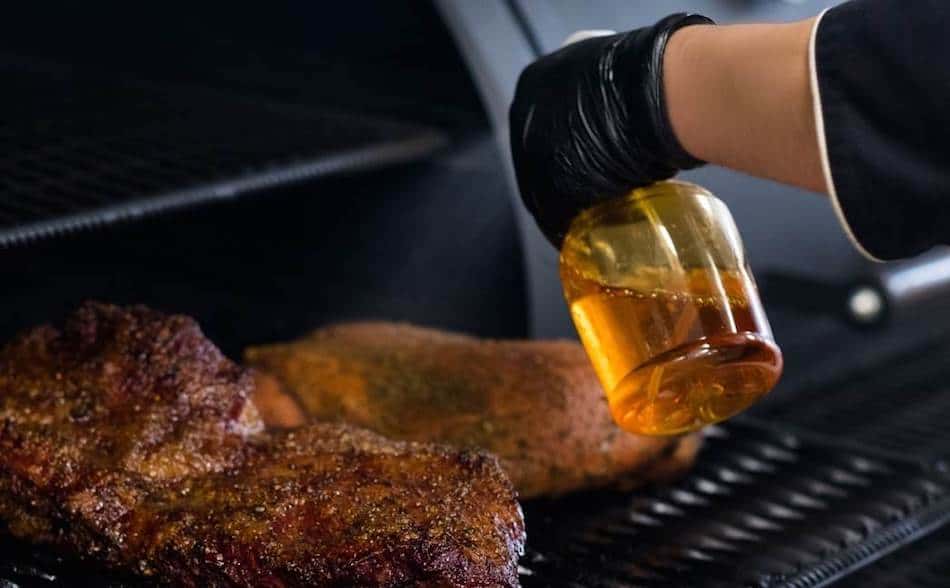
6. Don’t Open The Lid Of Your Smoker
One of the biggest mistakes beginners make is constantly opening the lid to their smoker. This will cause massive temperature fluctuations, and it will slow down the cook because you will lose the heat that you had built up inside your smoker. Invest in a good meat thermometer with two probes. That way, you will know exactly what’s going on with your smoker and meat without having to check on it. The Beginner’s Guide To Meat Thermometers.
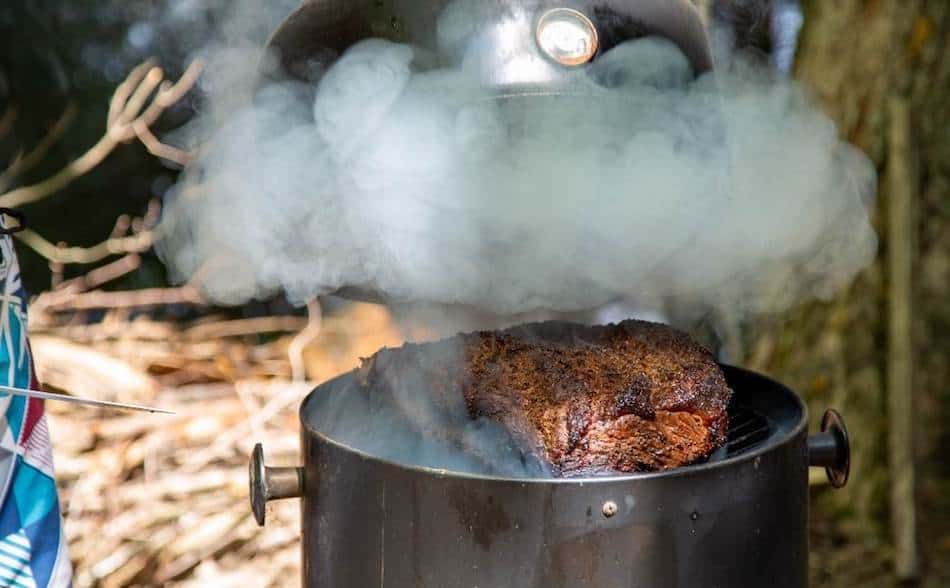
7. Marbled Briskets Cook Faster
If you smoke a lean USDA Select grade brisket, it will take longer to cook. Try smoking a Choice grade or a Prime grade brisket because it will contain more fat, so you won’t take as long. A Choice or a Prime grade brisket is going to cost more money, but it will be more flavorful, and more juicy. And if you want a brisket sooner, then it will also save you a few hours in total cook time.
The USDA grade beef based on the marbling, the juiciness and the tenderness. It is also based on the age of the animal. Most of the meat you see on the shelf will be Choice brisket, but from time to time you will see a USDA Select. This can be difficult to smoke, and will take longer.
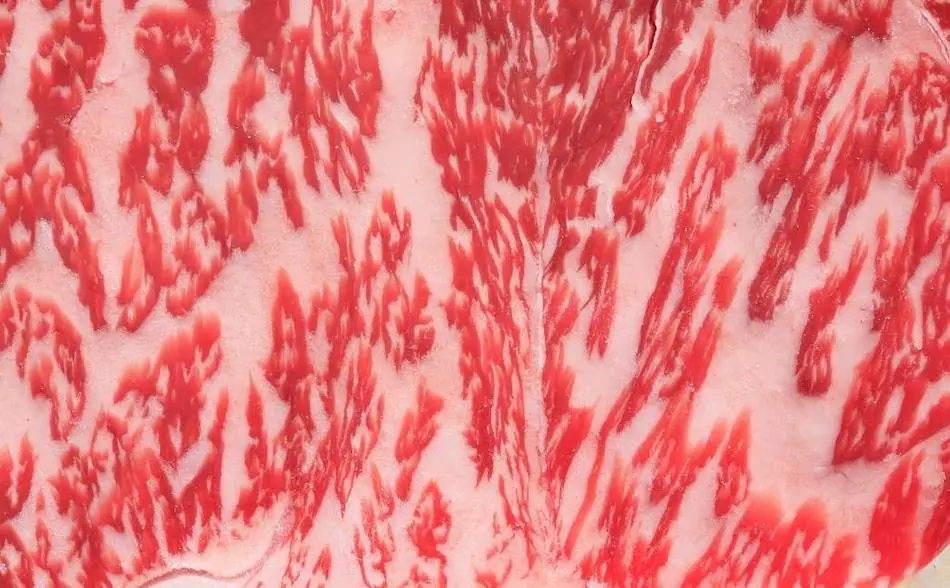
8. Split The Brisket – Separate The Two Muscles
If you have ever smoked a full packer brisket, you would know that it is an enormous task. You can easily spend 20 hours trying to cook one of these enormous beasts. It might be worth splitting the brisket flat and the brisket point and cooking them separately. This will save you a few hours.
A flat is best cooked in a pan with fat trimmings on the rack above. The fat will melt and drip down onto the brisket flat. This brisket muscle is lean, so it contains no fat cap and is much thinner than the point. A brisket flat is more difficult to smoke, and can dry out easily. The point, however, contains more fat and can handle more.
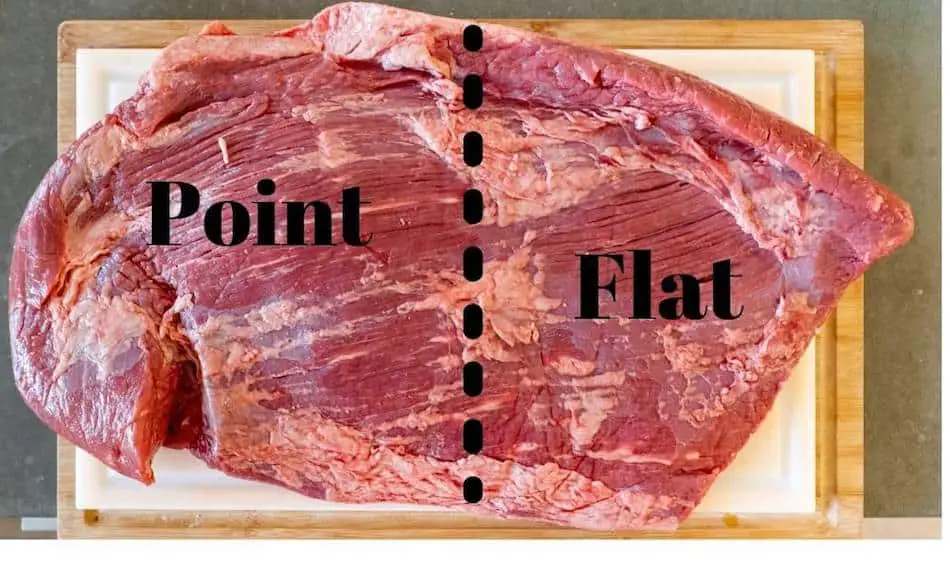
9. Remove the Water Pan
Most charcoal smokers will have the capacity for a water pan. This will increase the moisture in the atmosphere, keeping the meat moist. Water will also help regulate the temperature, especially in charcoal smokers. However, if you want your brisket done sooner, remove the water pan.
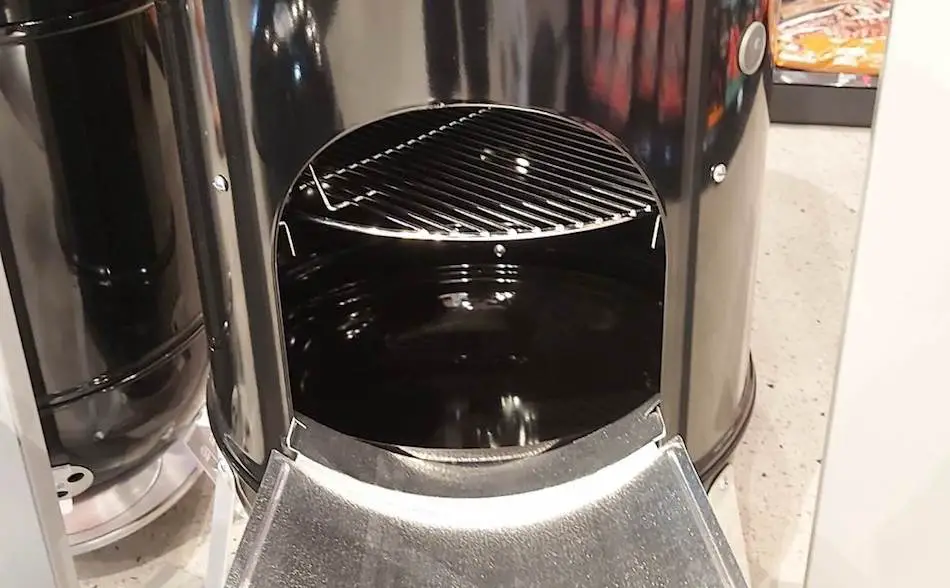
10. Electric Smokers Don’t Get Hot Enough
The problem with electric smokers is they struggle to reach 275° F. This isn’t a problem for most meats, but if you want a brisket in a hurry, then you may become frustrated with your electric. The way around this is to finish your brisket in the oven. Leave your brisket in your electric smoker for the first part of the cook, then once you wrap your brisket, shut down your electric smoker and turn on your oven.
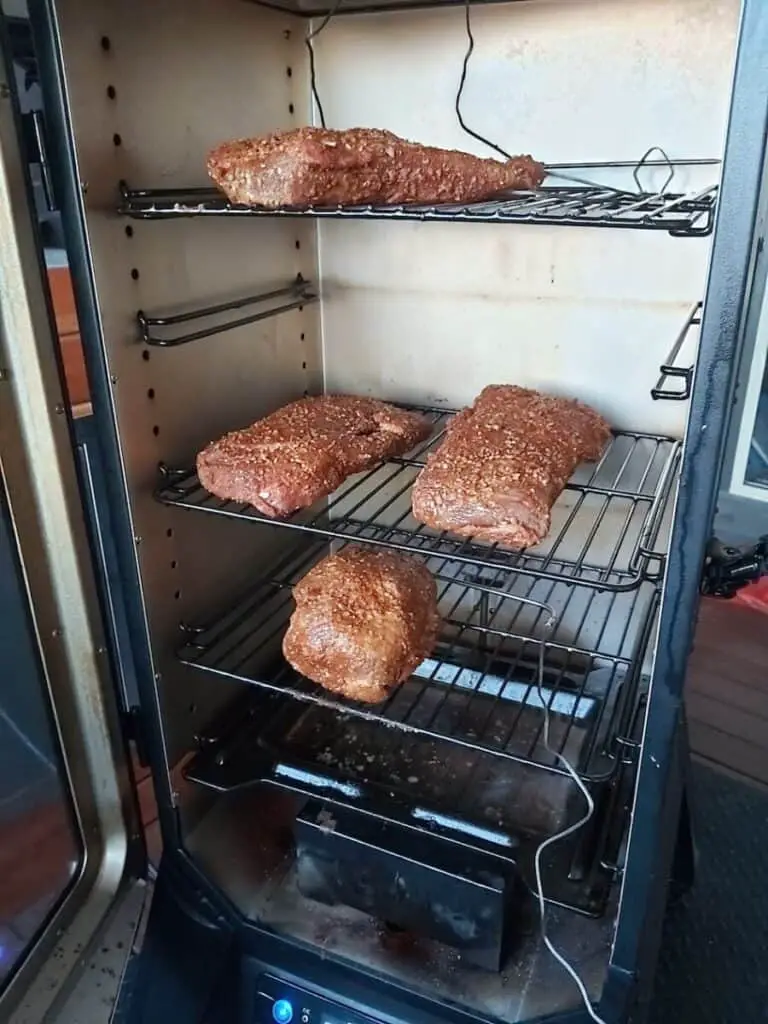
Don’t Remove Your Brisket Too Soon
Impatience may tempt you to pull your brisket out of the smoker before it’s reached the 195°F to 203°F internal temperature. Brisket needs time to break down the connective tissue, and the only way to do this is by exposing the meat to low temperature over a long period. If you pull the brisket out too soon, although it will be safe to eat, it will be chewy. The magic happens in the later part of the cook when all that connective tissue and fat renders and turns into a delicious gelatin-like texture. If you’re in a hurry, you may be tempted to serve the brisket at a safe eating temperature, but the brisket may be inedible if it hasn’t had enough time to break down.
My Favorite Brisket Tools
Thanks for checking out this article. I hope you learned a few things. Here are some of my favorite tools I use when smoking brisket that may be useful to you. These are affiliate links, so if you decide to purchase any of these products, I’ll earn a commission. But in all honesty, these are the tools I recommend to my family and friends who are just starting out.
Meat Injector: Injecting meat is a great way to take your barbecue to the next level and help you make competition-style brisket. An injector is the only way you will be able to get flavor and moisture into the middle of the meat. The Beast Injector is a stainless steel injector that is sturdy and affordable. Check the latest price on Amazon here.
Brisket Marinade: The best injection solution on the market is the Butcher BBQ Brisket Injection. This marinade is used in competitions and is made by World Barbecue Champion pitmaster, Dave Bouska. You can find the marinade on Amazon here.
Butcher Paper: Wrapping brisket in butcher paper has become a huge trend in barbeque thanks to Aaron Franklin. Wrapping your brisket in paper will give you a nice brisket bark. However, you can’t just use any old paper, it has to be unwaxed, food grade paper. You can find it on Amazon here.
Brisket Rub: These days I make my own rub when possible, but I always have a few pre-made rubs for when I’m running low. Barbecue guru Malcom Reed produces Killer Hogs, one of the best brisket rubs I’ve found over the years. Another great rub is Slap Yo Daddy, made by brisket master and multiple World Barbecue Champion, Harry Soo.
Meat Thermometer: There are dozens of fancy thermometers on the market, but I still use my trusty TP20. For around $50, I have a high-quality meat thermometer with two probes, and can track the temperature of my smoker with one probe, and my meat with the other probe. The ThermoPro TP20 is an Amazon Best Seller because it’s the easiest thermometer to operate, is durable, highly accurate, and comes with pre-programmed meat settings.
Instant Read Thermometer: Arguably, the second most important tool you need is a fast and accurate instant-read thermometer. These tools play an important role in the latter stages of the cook when the meat needs regular checking in multiple areas. I use the ThermoPro TP19 because it can do everything a ThermaPen can do, but for a fraction of the cost. You can check out the TP19 on Amazon here.
Advanced Thermometer and Automatic Temperature Controller: Once you’re ready to take things seriously, the FireBoard 2 Drive is a six-channel Bluetooth/Wi-Fi thermometer that can monitor up to 6 pieces of meat, control and graph your cook sessions on your smartphone, and attaches to an an automatic blower that will convert your charcoal smoker to a set-and-forget. This is one of the most advanced meat thermometers on the market. You can check it out on the FireBoard website here.

